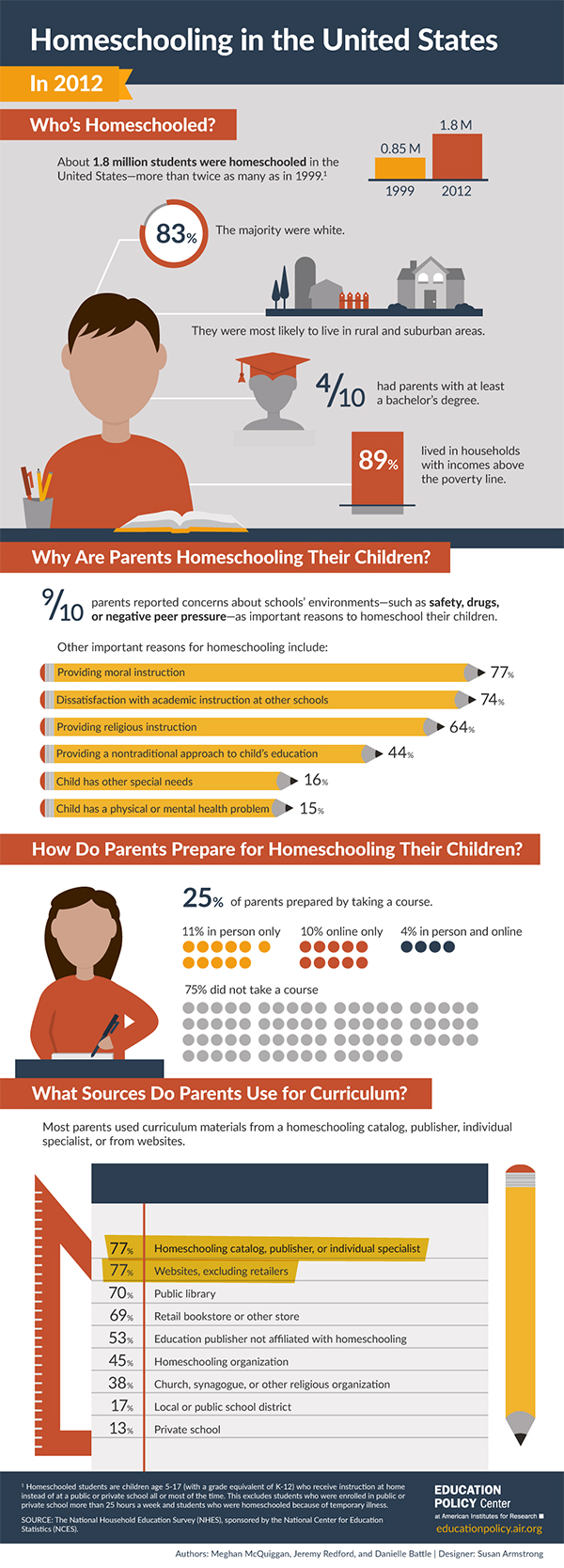Homeschooling in the United States: 2012
Since 1999, the National Household Education Surveys Program (NHES), conducted by the U.S. Department of Education’s National Center for Education Statistics (NCES) in the Institute of Education Sciences, has collected nationally representative data that can be used to estimate the number of homeschooled students in the United States.
This report provides estimates of the number, percentage, and characteristics of homeschooled students in the United States in 2012 and provides historical context by showing overall estimates of homeschooling in the United States since 1999.
 It also provides homeschooled students’ learning context by examining reasons for homeschooling, sources of curriculum, parent preparation for homeschooling, students’ online course-taking, and math and science subject areas taught to homeschooled students during home instruction.
It also provides homeschooled students’ learning context by examining reasons for homeschooling, sources of curriculum, parent preparation for homeschooling, students’ online course-taking, and math and science subject areas taught to homeschooled students during home instruction.
National Totals and Characteristics of Homeschooled Students
- The percentage of students ages 5–17 with a grade equivalent of kindergarten through grade 12 who are homeschooled—the homeschooling rate—has increased over time. In 2012, there were an estimated 1.8 million homeschooled students in the United States, which is an increase from 850,000 in 1999, when estimates were first reported.
- The homeschooling rate increased from 1.7 percent in 1999 to 3.4 percent in 2012. Most homeschooled students were White (83 percent) and nonpoor (89 percent), lived in rural or suburban areas and cities, and spanned all grade equivalents.
The Learning Context of Homeschooled Students
- Nine in 10 homeschooled students’ parents reported that concern about schools’ environments was an important reason for their decision to homeschool.
- Websites, homeschooling catalogs, public libraries, and bookstores were the more frequently cited sources of curriculum for homeschooled students in 2012. Curricula from public and private schools were among the least cited.
- About a quarter of homeschooled students had parents who took a course to prepare for their child’s home instruction.
- About a third of middle school-level homeschooled students (35 percent) and a third of high school-level (34 percent) homeschooled students took online courses.
- Most high-school level homeschooled students had home instruction that included basic algebra (88 percent), earth sciences or geology and biology (69 percent each).
